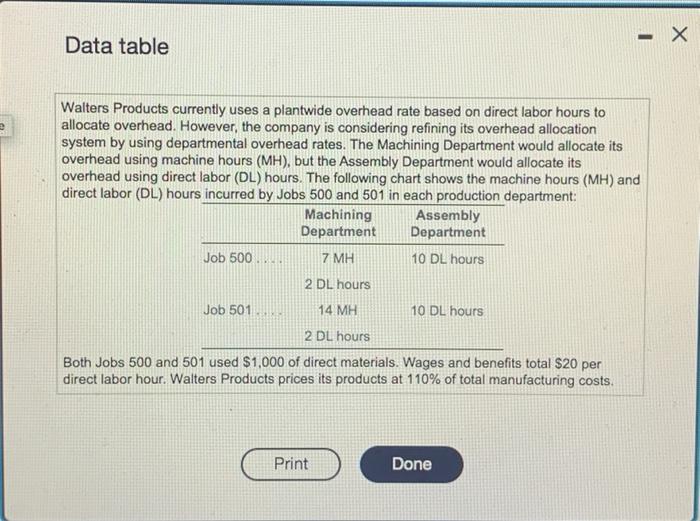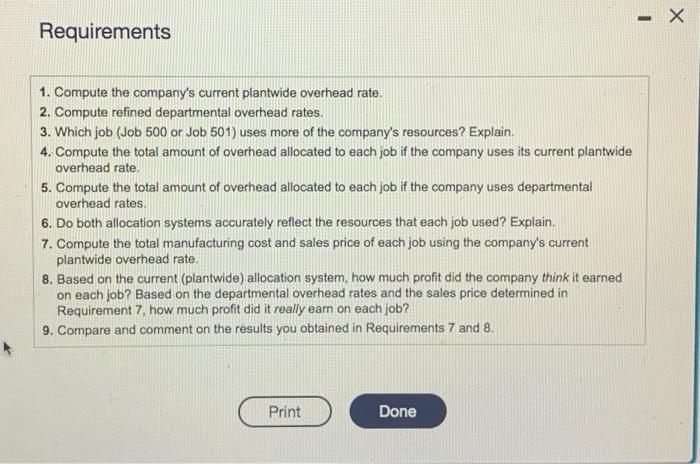Walters Products manufactures its products in two separate departmente: Mochiring and Asseenbly. Total marufacturing overhead costs for the year are budgeted at 51.050,000. Or this amount, the Machining Department incurs $650,000 (primarly for machine operasion and depreciation) while the Assembly Department incurs 400,000 . The compary estimatas that it will incur 5,000 machine hours (all in the Machining Department) and 10,000 direct labor hours (2,000 in the Machining Department and 3,000 in the Assembly Departinent) during the your: (Cliok the icon to view the additional information.) Read the cenuitements- Requirement 1. Compute the company's curtent plantwide overhead rate. (Round your answer to the nearest dollar) Begin by determining the fomula, then compute the rath. Data table Walters Products currently uses a plantwide overhead rate based on direct labor hours to allocate overhead. However, the company is considering refining its overhead allocation system by using departmental overhead rates. The Machining Department would allocate its overhead using machine hours (MH), but the Assembly Department would allocate its overhead using direct labor (DL) hours. The following chart shows the machine hours (MH) and direct labor (DL) hours incurred by Jobs 500 and 501 in each production department: Both Jobs 500 and 501 used $1,000 of direct materials. Wages and benefits total $20 per direct labor hour. Walters Products prices its products at 110% of total manufacturing costs. Requirements 1. Compute the company's current plantwide overhead rate. 2. Compute refined departmental overhead rates. 3. Which job (Job 500 or Job 501) uses more of the company's resources? Explain. 4. Compute the total amount of overhead allocated to each job if the company uses its current plantwide overhead rate. 5. Compute the total amount of overhead allocated to each job if the company uses departmental overhead rates. 6. Do both allocation systems accurately reflect the resources that each job used? Explain. 7. Compute the total manufacturing cost and sales price of each job using the company's current plantwide overhead rate. 8. Based on the current (plantwide) allocation system, how much profit did the company think it earned on each job? Based on the departmental overhead rates and the sales price determined in Requirement 7, how much profit did it really earn on each job? 9. Compare and comment on the results you obtained in Requirements 7 and 8









